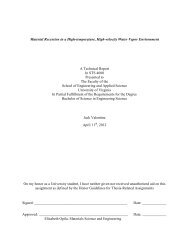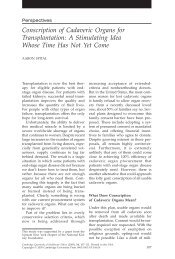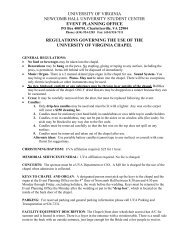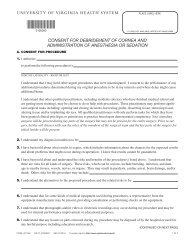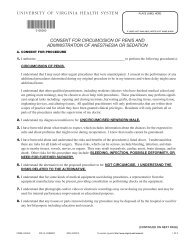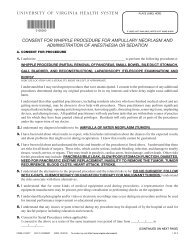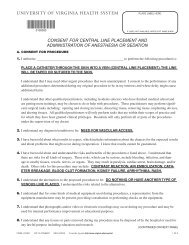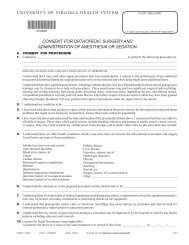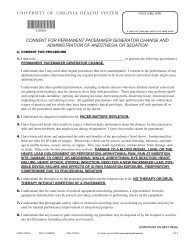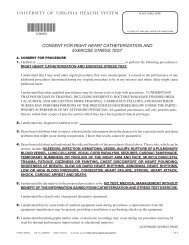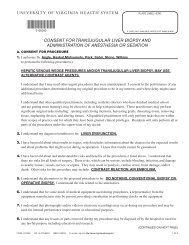Brick_Wood_Stone_Land_Water_Measurement - University of Virginia
Brick_Wood_Stone_Land_Water_Measurement - University of Virginia
Brick_Wood_Stone_Land_Water_Measurement - University of Virginia
Create successful ePaper yourself
Turn your PDF publications into a flip-book with our unique Google optimized e-Paper software.
<strong>Brick</strong>_<strong>Wood</strong>_<strong>Stone</strong>_<strong>Land</strong>_<strong>Water</strong>_<strong>Measurement</strong><br />
The gently terraced square that resulted from the law <strong>of</strong> the ground has on either side between the<br />
pavilions an increasing number <strong>of</strong> dormitories as one moves south, creating an illusion <strong>of</strong> perspective<br />
as one stands on either end. From the closed north end the pavilions appear to be spaced evenly apart<br />
and from the south end looking northward one’s attention is forced toward the grand central building.<br />
Some historians assert that the illusion <strong>of</strong> perspective was not intentional by design but resulted from the<br />
constraints <strong>of</strong> the site and the need to provide more pavilions for the pr<strong>of</strong>essors.<br />
See Patton, Jefferson, Cabell and the <strong>University</strong> <strong>of</strong> <strong>Virginia</strong>, 187. Wilson gives the dimensions <strong>of</strong> the spacing <strong>of</strong> the pavilions (as provided by James Murray Howard, the <strong>University</strong> <strong>of</strong><br />
<strong>Virginia</strong> Architect for the Historic Buildings and Grounds): “The first four numbers--I-III on the west, and II-IV on the east--are 53 feet and 64 feet apart respectively. Number V on the west is<br />
89 feet from III, and number VI on the east is 90.5 feet from IV. The next on the west, VII, is 104 feet, then IX is 122 feet, and for the east, numbers VIII and X, nearly the same dimensions hold.<br />
The small differences result from the different widths <strong>of</strong> the pavilions” (“Jefferson’s Lawn: Perceptions, Interpretations, Meanings,” in Wilson, Thomas Jefferson’s Academical Village, 90).<br />
Wilson also asserts that the illusion <strong>of</strong> perspective was not by design but resulted from the “constraints <strong>of</strong> the site and the need to provide more pavilions for the pr<strong>of</strong>essors” (ibid., 71).<br />
httpwww.loc.govexhibitsjeffersonimagesvc76.jpg



